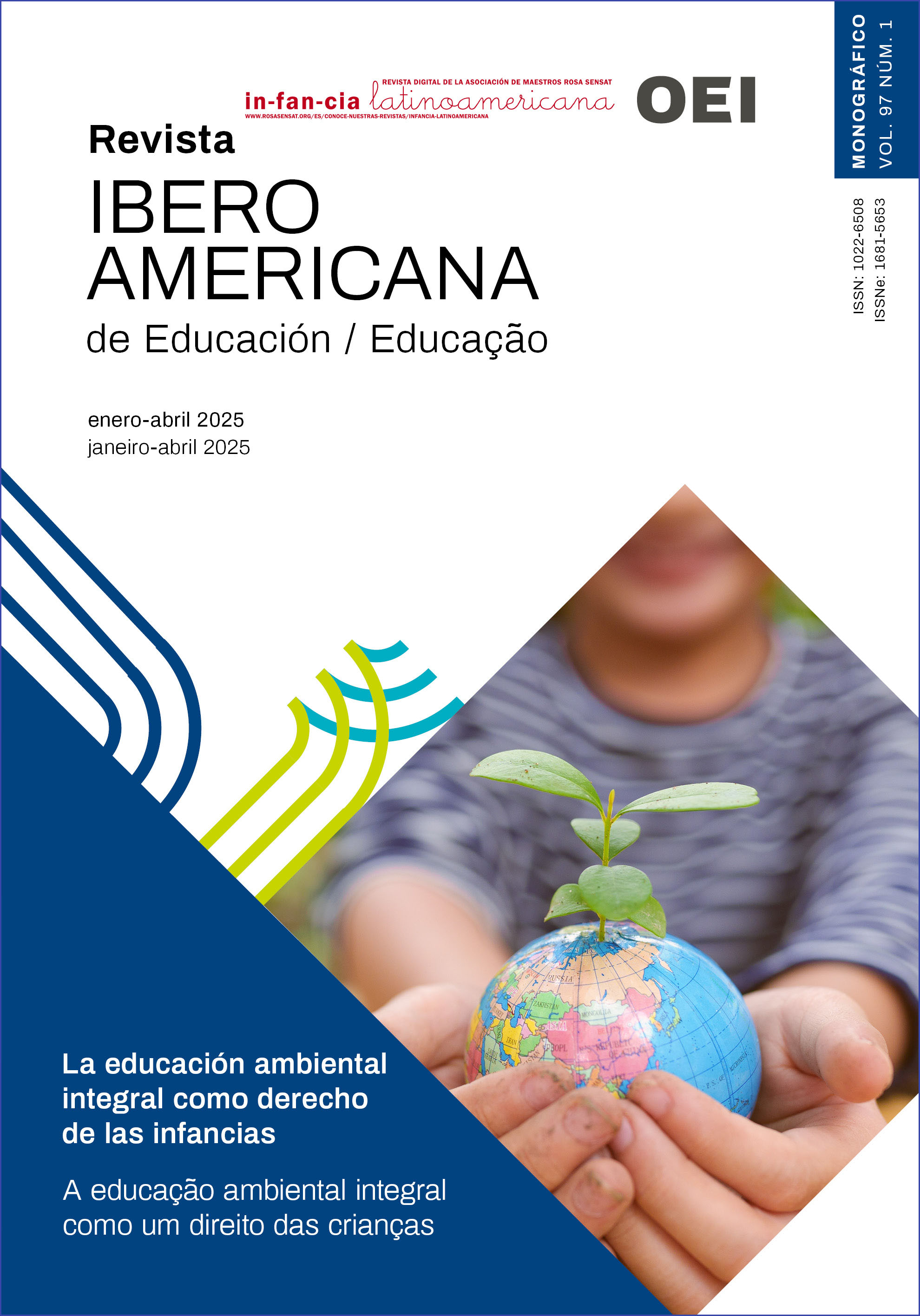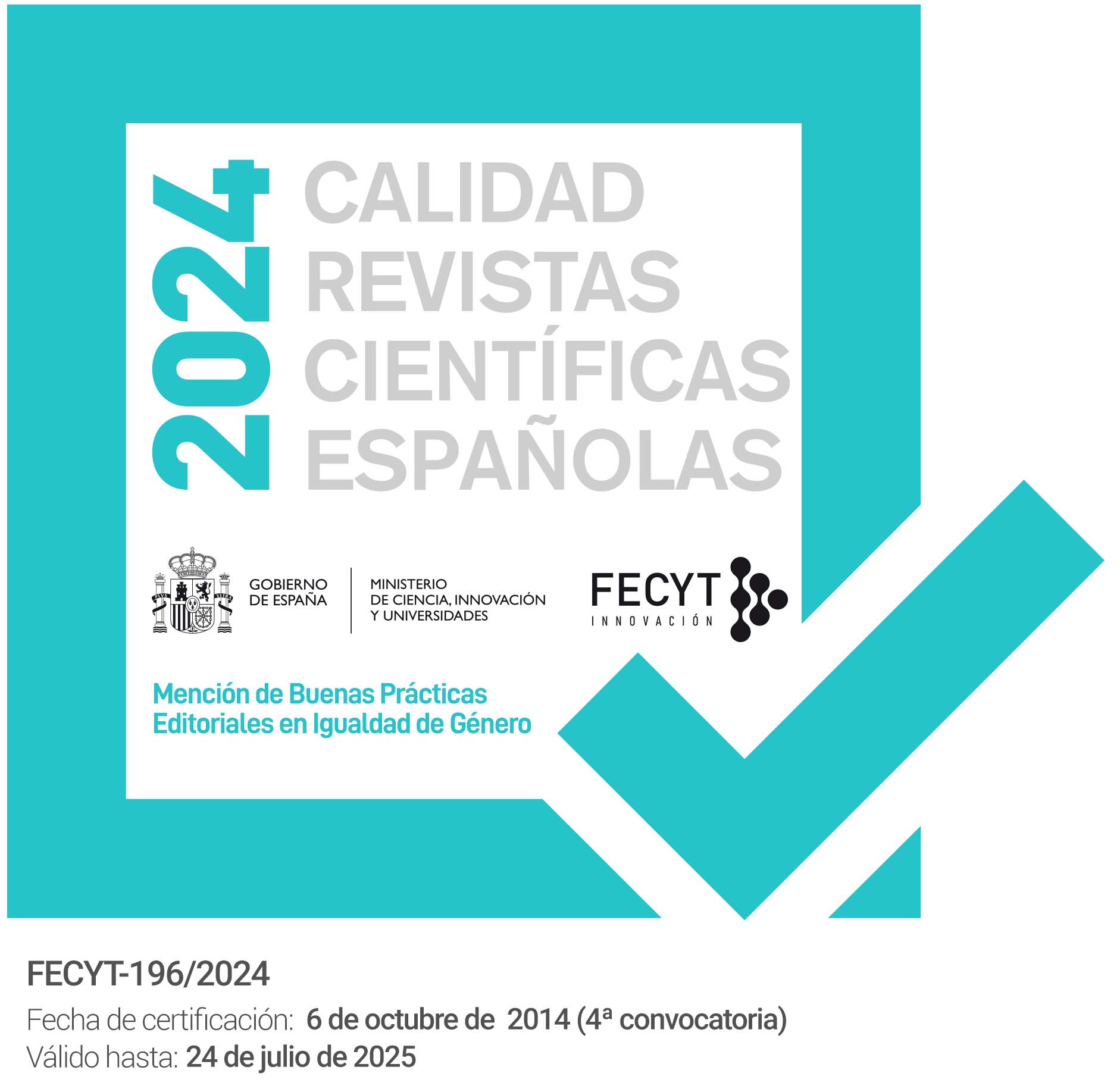Estudio preliminar sobre las ideas previas de alumnado de cinco años acerca del ruido
DOI:
https://doi.org/10.35362/rie9716587Palabras clave:
Educación infantil, concienciación sobre el ruido, desarrollo sostenible, ambiente saludableResumen
El volumen de la voz es habitualmente muy alto en el aula de infantil, aspecto que dificulta la comunicación. Con esta investigación se pretende conocer las ideas del alumnado de 5 años sobre el ruido, como etapa previa al diseño de una propuesta para concienciar sobre el mismo. La mayoría de los participantes manifiesta que los espacios ruidosos provocan molestias y daños en los oídos. Algunos no identifican los lugares de ocio ruidosos como molestos ya que en ellos se divierten. La etapa de infantil es un momento idóneo para desarrollar hábitos saludables, por lo que es necesario diseñar e implementar propuestas que conciencien sobre los efectos del ruido. En este sentido, se describen dos simulaciones para concienciar al alumnado sobre el ruido y sus efectos.
Descargas
Citas
Areljung, S., Due, K., Ottander, C., Skoog, M., y Sundberg, B. (2021). Why and how teachers make use of drawing activities in early childhood science education. International Journal of Science Education, 43 (13), 2127-2147. https://doi.org/10.1080/09500693.2021.1953186 DOI: https://doi.org/10.1080/09500693.2021.1953186
Astolfi, A., Puglisi, G. E., Murgia, S., Minelli, G., Pellerey, F., Prato, A. y Sacco, T. (2019). Influence of classroom acoustics on noise disturbance and well-being of first graders. Frontiers in Psychology, 10, 1-20. https://doi.org/10.3389/fpsyg.2019.02736 DOI: https://doi.org/10.3389/fpsyg.2019.02736
Bonoti, F., Christidou, V. y Spyrou, G. M. (2019). ‘A smile stands for health and a bed for illness’: Graphic cues in children’s drawings. Health Education Journal, 78 (8), 728-742. https://doi.org/10.1177/0017896919835581 DOI: https://doi.org/10.1177/0017896919835581
Bramati, L., Allenstein Gondim, L. M., Schmidt, L., Lüders, D., Meira Taveira, K. V., Néron, N., Miranda de Araujo, C. y Bender Moreira de Lacerda, A. (2024): Effectiveness of educational programs in hearing health: a systematic review and meta-analysis. International Journal of Audiology, 1-12. https://doi.org/10.1080/14992027.2024.2313025 DOI: https://doi.org/10.1080/14992027.2024.2313025
Bulunuz, N. (2008). Noise pollution in Turkish elementary schools: evaluation of noise pollution awareness and sensitivity training. International Journal of Environmental & Science Education, 9 (2), 215-234. https://doi.org/10.12973/ijese.2014.212a
Bulunuz, M., D. Ovali, A. C., İri Çıkrıkçı, A., y Mutlu, E. (2017). An Evaluation of Educational Practices Concerning Noise Level and Noise Control in Nursery School: An Action Research. Education and Science, 42 (192), 211–232. https://doi.org/10.15390/EB.2017.7215 DOI: https://doi.org/10.15390/EB.2017.7215
Cameron, H. (2005). Asking the tough questions: A guide to ethical practices in interviewing young children. Early Child Development and Care, 175(6), 597–610. https://doi.org/10.1080/03004430500131387 DOI: https://doi.org/10.1080/03004430500131387
Christidou, V., Nikos Barkas, A. D., Papadopoulou, M. y Grammenos, S. (2015). “Young noise researchers”: an intervention to promote noise awareness in preschool children. Journal of Baltic Science Education, 14(5), 569-585. https://doi.org/10.33225/jbse/15.14.569 DOI: https://doi.org/10.33225/jbse/15.14.569
Eshach, H. (2014). Development of a student-centered instrument to assess middle school students’ conceptual understanding of sound. Physical Review Special Topics-Physics Education Research, 10 (1), 1-14. https://doi.org/10.1103/PhysRevSTPER.10.010102 DOI: https://doi.org/10.1103/PhysRevSTPER.10.010102
European Environment Agency. (2020). Environmental noise in Europe 2020. Publications Office of the European Union. https://go.oei.int/qt7vhmub
Fernandes. S., Liamputtong, P. y Wollersheim, D. (2015). What makes people sick? Burmese refugee children’s perceptions of health and illness. Health Promotion International 30 (1), 151–161. https://doi.org/10.1093/heapro/dau082 DOI: https://doi.org/10.1093/heapro/dau082
García-García, I., Jiménez-Tejada, M. P. y Romero-López, M. C. (2016). Ideas previas de salud y enfermedad en niños de Educación Infantil de 5 años. En J. L. Bravo Galán (Ed.). Actas de los 27 Encuentros de Didáctica de las Ciencias Experimentales (1451-1458). Universidad de Extremadura.
Griest S. E., Folmer R. L., y Martin W. H. 2007. Effectiveness of “dangerous decibels”, a school-based hearing loss prevention program. American Journal of Audiology 16 (2), 165-181. https://doi.org/10.1044/1059-0889(2007/021) DOI: https://doi.org/10.1044/1059-0889(2007/021)
Guisasola, J. (2024). La investigación basada en el diseño: algunos desafíos y perspectivas. Revista Eureka sobre Enseñanza y Divulgación de las Ciencias, 21 (2), 1-12. https://doi.org/10.25267/Rev_Eureka_ensen_divulg_cienc.2024.v21.i2.2801 DOI: https://doi.org/10.25267/Rev_Eureka_ensen_divulg_cienc.2024.v21.i2.2801
Holmes, A. E., Widen, S. E., Carver, C. L., y White, L. L. (2007). Perceived hearing status and attitudes toward noise in young adults. American Journal of Audiology, 16, 182-189. https://doi.org/10.1044/1059-0889(2007/022) DOI: https://doi.org/10.1044/1059-0889(2007/022)
Hotchkin, C., y Parks, S. (2013). The Lombard effect and other noise-induced vocal modifications: insight from mammalian communication systems. Biological Reviews. 88, 809–824. https://doi.org/10.1111/brv.12026 DOI: https://doi.org/10.1111/brv.12026
Houle, M. E., y Barnett, G. M. (2008). Students’ conceptions of sound waves resulting from the enactment of a new technology-enhanced inquiry-based curriculum on urban bird communication. Journal of Science Education and Technology, 17(3), 242-251. DOI: https://doi.org/10.1007/s10956-008-9094-6
Jiménez-Tejada, M. P., Hódar, J. A. y González-García, F. (2012). Noise, what noise? Raising awareness of auditory health among future primary-school teachers. Teaching and Teacher Education, 28 (8), 1083-1090. DOI: https://doi.org/10.1016/j.tate.2012.06.002
Khan, K. M., Bielko, S. L. y McCullagh, M. C. (2018). Efficacy of hearing conservation education programs for youth and young adults: a systematic review. BMC Public Health, 18, 1-12. DOI: 10.1186/s12889-018-6198-7 DOI: https://doi.org/10.1186/s12889-018-6198-7
Lacerda, A. B. M., C. G. d O. Gonçalves, G. Lacerda, D. C. B. Lobato, L. Santos, A. C. Moreira, and A. Ribas. (2015). Childhood Hearing Health: Educating for Prevention of Hearing Loss. International Archives of Otorhinolaryngology 19(1),16–21. DOI: https://doi.org/10.1055/s-0034-1387810
Lees, R. M., Roberts, J. H. y Wald, Z. (1985). Noise induced hearing loss and leisure activities of young people: A pilot study. Canadian Journal of Public Health. 76, 171-173.
Mouratidi, P-S., Bonoti, F. y Leondari, A. (2016). Children’s perceptions of illness and health: An analysis of drawings. Health Education Journal, 75(4), 434-447. https://doi.org/10.1177/0017896915599416 DOI: https://doi.org/10.1177/0017896915599416
Niskar, A. S., Kieszak, S. M., Holmes, A. E., Esteban, E., Rubin, C. y Brody, D. J. (1998). Prevalence of hearing loss among children 6 to 19 years of age: The third national health and nutrition examination survey. Journal of the American Medical Association, 279, 1071-1075. https://doi.org/10.1001/jama.279.14.1071 DOI: https://doi.org/10.1001/jama.279.14.1071
Organización de las Naciones Unidas para la Educación, la Ciencia y la Cultura. (2017). Educación para los objetivos del desarrollo sostenible. Objetivos de aprendizaje. UNESCO. https://go.oei.int/eaj8xxbh
Organización Mundial de la Salud. (2021). Informe mundial sobre la audición. https://go.oei.int/aojmtrkf
Organización Mundial de la Salud (2024). How much does environmental noise affect our health? WHO updates methods to assess health risks. https://go.oei.int/da16s5pu
Organización Mundial de la Salud. (2022). La OMS publica una nueva norma para hacer frente a la creciente amenaza de la pérdida de audición. https://go.oei.int/ywc9jazs
ONU. (s.f.). 17 objetivos para transformar nuestro mundo. https://www.un.org/sustainabledevelopment/es/
Universidad de Zaragoza (2024). Ruido, definiciones. Unidad de Prevención de Riesgos Laborales. Gerencia. https://go.oei.int/aafy8aon
Warembourg, Ch., Nieuwenhuijsena, M., Ballester, F., de Castro, M., Chatzi, L., Espluguesc, A., Heude, B., Maitre, L., McEachan, R., Robinson, O., Slama, R., Sunyera, J., Urquiza, J., Wright, J., Basagaña, X. y Martine Vrijheida, M. (2021). Urban environment during early-life and blood pressure in young children. Environment International, 146, 1-9. https://doi.org/10.1016/j.envint.2020.106174 DOI: https://doi.org/10.1016/j.envint.2020.106174
Cómo citar
Publicado
Número
Sección
Licencia
Derechos de autor 2025 Revista Iberoamericana de Educación

Esta obra está bajo una licencia internacional Creative Commons Atribución 4.0.
Aquellos autores/as que tengan publicaciones con esta revista, aceptan los términos siguientes:















